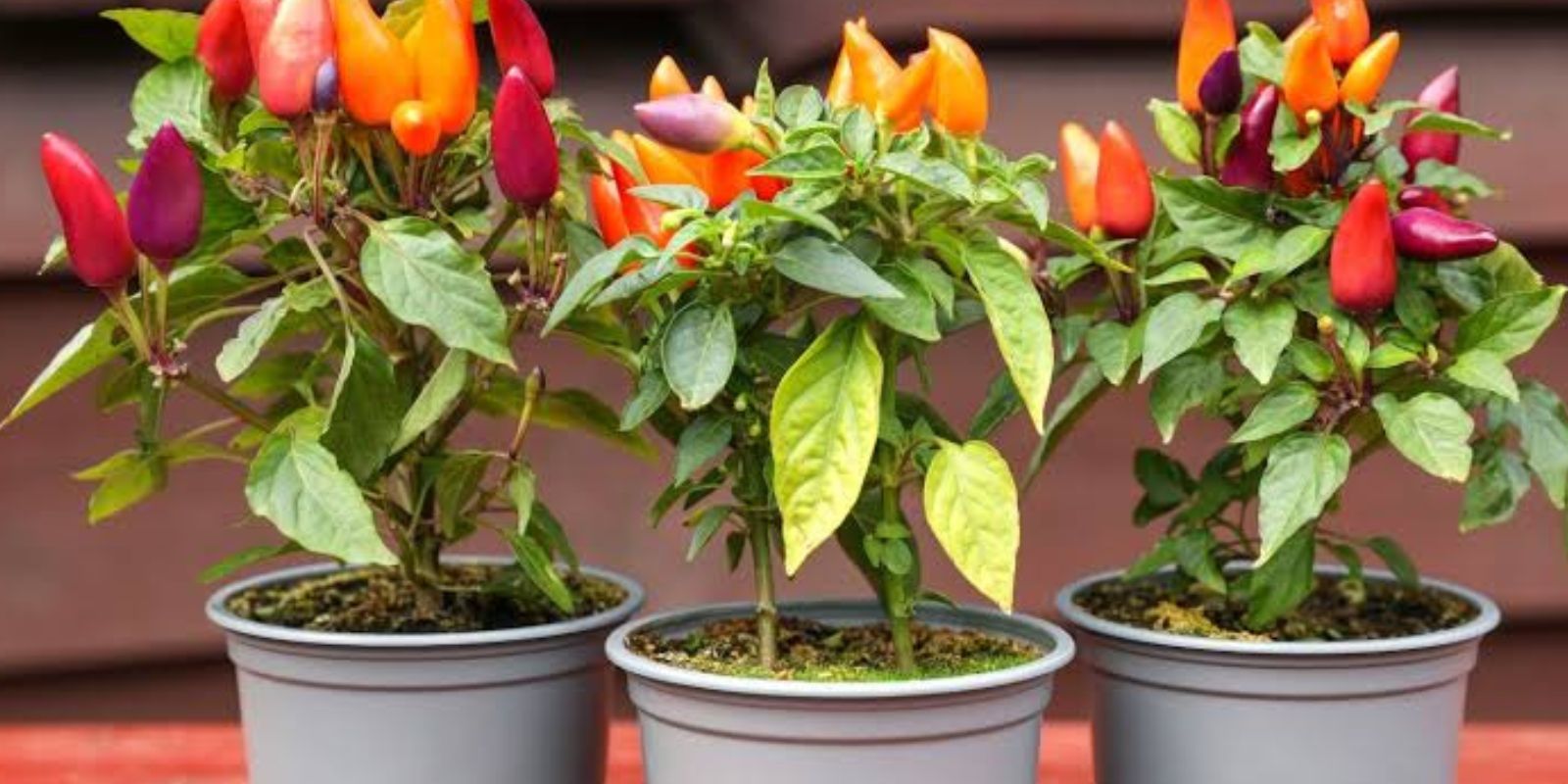Growing peppers in containers is a fantastic way to enjoy fresh, homegrown produce, even if you don’t have a large garden. Peppers thrive in pots, making them ideal for balconies, patios, and urban gardens. Whether you’re growing bell peppers, chili peppers, or sweet peppers, you can successfully cultivate them in containers with the right care.
In this guide, we’ll cover everything you need to know about growing peppers from seeds in pots, from selecting the right container to harvesting your peppers.
Why Grow Peppers in Containers?
Container gardening offers many advantages, especially for growing peppers:
✔ Space-Saving – Ideal for apartments, balconies, and small gardens.
✔ Better Control – You can manage soil quality, watering, and sun exposure more easily.
✔ Fewer Pests – Containers can help reduce soil-borne pests and diseases.
✔ Mobility – You can move your plants to follow the sun or protect them from extreme weather.
Step-by-Step Guide to Growing Peppers from Seeds in Pots
1. Choose the Right Container
Peppers have deep root systems, so they need a large container to grow properly.
✔ Use a pot that is at least 12 inches in diameter and 12 inches deep.
✔ Ensure the container has drainage holes to prevent root rot.
✔ Clay, plastic, or fabric pots all work well, but fabric grow bags provide excellent aeration.
2. Select Quality Seeds
Choosing the right pepper variety is important. Some peppers grow better in containers than others.
Great varieties for pots:
✔ Bell Peppers – Classic sweet peppers that grow well in medium to large pots.
✔ Jalapeño Peppers – A spicy favorite that thrives in containers.
✔ Cayenne Peppers – Slim, hot peppers that grow well in small spaces.
✔ Mini Sweet Peppers – Compact plants that produce colorful, bite-sized fruit.
You can purchase seeds from a garden center or save seeds from store-bought organic peppers.
3. Use the Right Soil Mix
Peppers need well-draining, nutrient-rich soil to grow healthy and strong.
✔ Use a high-quality potting mix (not regular garden soil).
✔ Add compost or aged manure to enrich the soil.
✔ Peppers prefer a slightly acidic to neutral pH (6.0–7.0).
✔ Mixing in perlite or sand helps improve drainage.
4. Planting the Seeds
✔ Fill the container with soil, leaving about 1 inch of space at the top.
✔ Plant the seeds ¼ inch deep and cover them lightly with soil.
✔ Space seeds 2–3 inches apart if planting multiple seeds in one pot.
✔ Mist the soil with warm water to keep it moist.
Place the container in a warm location where temperatures stay between 70–85°F (21–29°C).
5. Provide Warmth and Light
Peppers thrive in warm temperatures and require plenty of sunlight.
✔ Keep the container in a sunny spot with at least 6–8 hours of direct sunlight daily.
✔ If growing indoors, use grow lights to supplement natural light.
✔ Keep temperatures above 65°F (18°C), as peppers grow slowly in cool conditions.
If you’re starting seeds indoors, place them on a heating mat to speed up germination.
6. Watering and Moisture Control
✔ Keep the soil moist but not soggy. Overwatering can cause root rot.
✔ Water deeply when the top 1 inch of soil feels dry.
✔ Use a watering can or drip irrigation system for even moisture distribution.
✔ Avoid splashing water on the leaves to prevent fungal diseases.
Tip: Mulching with straw or wood chips helps retain moisture.
7. Fertilizing for Healthy Growth
Peppers are heavy feeders, so regular fertilization is essential.
✔ Use a balanced fertilizer (such as 10-10-10) every 4–6 weeks.
✔ Once plants start flowering, switch to a low-nitrogen fertilizer to encourage fruiting.
✔ Organic options like compost tea, fish emulsion, or seaweed extract work well.
8. Supporting the Plants
✔ As your peppers grow, they may need support to keep them upright.
✔ Use small stakes or cages to prevent bending or breaking.
✔ Tie the plant gently with soft twine or plant ties.
This is especially important for heavier pepper varieties, like bell peppers.
9. Pruning and Maintenance
✔ Prune unhealthy or overcrowded leaves to improve airflow.
✔ Pinch off the first few flowers to encourage stronger root development.
✔ Check regularly for pests like aphids, spider mites, or caterpillars.
If pests appear, use neem oil or insecticidal soap to control them naturally.
10. Pollination and Fruit Development
Peppers self-pollinate, but you can boost fruit production by:
✔ Gently shaking the plant to distribute pollen.
✔ Using a soft brush or cotton swab to transfer pollen between flowers.
✔ Attracting pollinators by planting marigolds or basil nearby.
Harvesting Peppers
✔ Peppers are ready to harvest when they reach their full size and color.
✔ Use scissors or garden shears to cut peppers off the plant.
✔ Picking peppers early encourages more fruit production.
Bell peppers turn red, yellow, or orange if left to ripen longer, while chili peppers increase in spiciness as they mature.
Common Issues and How to Fix Them
✔ Yellowing Leaves – Usually caused by overwatering or nutrient deficiencies. Check soil moisture and fertilize appropriately.
✔ Blossom Drop – Occurs due to temperature stress. Keep plants warm at night and provide shade during heatwaves.
✔ Small Peppers – Often due to lack of sunlight or poor pollination. Move to a sunnier spot and hand-pollinate if necessary.
Final Thoughts: Enjoy Your Homegrown Peppers!
Growing peppers from seeds in pots is easy, rewarding, and perfect for small spaces. With the right care, you’ll enjoy a continuous harvest of fresh, flavorful peppers right from your balcony, patio, or indoor garden.
Start your pepper-growing journey today! Have you grown peppers in containers before? Share your experience in the comments! 🌱🫑

